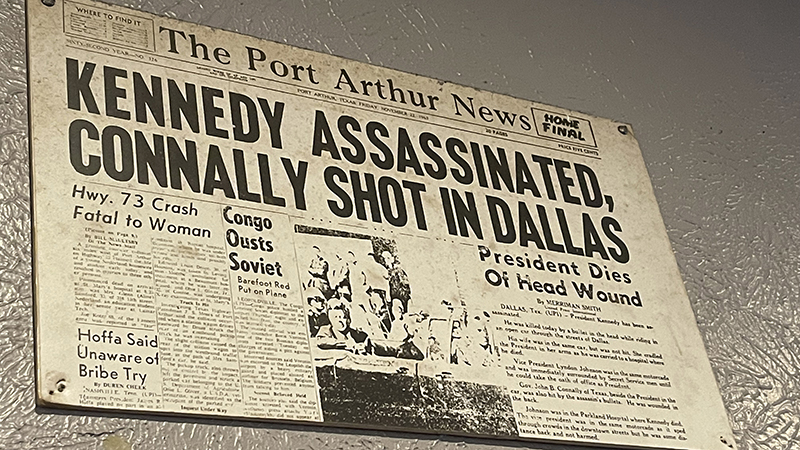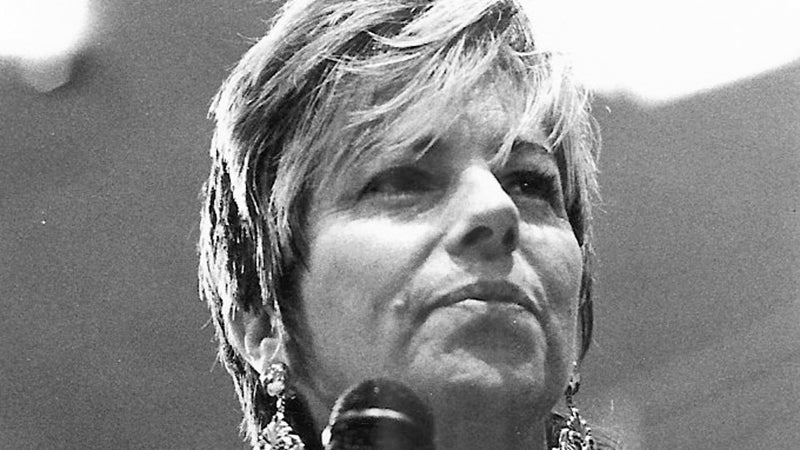MONIQUE BATSON — While the way news is consumed changes, the historical importance has not
Published 12:09 am Friday, February 11, 2022

- The Port Arthur News captures the aftermath of an American tragedy. Chris Moore/The News
|
Getting your Trinity Audio player ready...
|
When a man named Bob from New York called my desk the other day, I thought his first question was more of a cheeky comment.
“Is it true that your paper first printed the quote, ‘Behind every great man there is a great woman?’”
His call just happened to be on a day my boss was working between multiple publications among our regional affiliates, and I was helping to fill in for him.
I laughed and said, “I’m not sure we created it, but I’d like to think we live by it.”
And he matter-of-frankly said, “No, you did.”
Multi-tasking happens to be a specialty of mine, so I was already on Google before he told me to look it up.
And there it was. The first website I found took me to an explanation that said, “The first printed citation I can find…is from the Texas newspaper The Port Arthur News, from February 1946.”
Bob, who is long-time newsperson working on a special project, was looking for the specific article.
And while most publications do have an archive of their previous editions, those in our area know almost nothing survived the remnants of Hurricane Harvey in 2017 — including our in-house archive.
But through about three minutes of digging (never underestimate how quickly a journalist can find what they’re looking for), reporter Mary Meaux found the original article on a website that archives newspapers.
It printed Feb. 1, 1946, in a story about an athlete who acknowledged the saying in a quote, and followed it up by saying it was the support of a great woman that brought him back to football after an injury that left him hospitalized for 18 months.
Whether he was referring to a parent, grandparent or spouse is unclear. But it could certainly be all of the above.
Seeing history in print has always fascinated me.
Turn on a historical documentary, and I’ll be the first to fall asleep. But toss me in a room with old newspapers, and I’m not coming out until someone comes to get me.
I used to spend days scrolling through microfilm of archived papers, amazed by everything from the dated language to the dated ads.
Did propping a 1950s housewife in a dress and apron up against an oven with the words, “this is what she truly wants for Christmas,” actually help sell appliances?
But I digress.
Last week I was on an assignment that took place in a Port Arthur venue decorated with metal plates of historical fronts from The Port Arthur News.
The headline “Kennedy Assassinated, Connally shot in Dallas” was printed in all caps across two rows of very large print. And below it was also a story of a fatal crash on Texas 73.
“Roosevelt pledges speed for relief” donned the top of one — also in large capital letters — above a story of the former president taking his oath. Next to it was an article about the opening of two new banks, which allowed area refineries to move their payrolls to the city.
It was a beautiful combination displaying the importance of national and local news, showing how a hometown publication can bring you the same information as every other media outlet, while also telling the stories of the things that happen in your neighborhood — things you won’t see when you turn your TV to a 24-hour national news station.
(At least, not typically. We have graced their airwaves with a few hurricanes and plant explosions.)
The way people consume their media is ever changing. Some still read the printed paper while others prefer to get their news digitally.
I, for one, happen to be in the latter category.
But anytime something of great importance happens, I always make sure to buy copies of local publications and set them aside.
On Sept. 11, 2001, doing so almost every day for the following year seemed tedious, seeing as how the news was still so fresh and relevant. But I kept up with a scrapbook of clippings and a bundle of complete papers. I did it for the kids I would one day have.
More than a decade later, my children began learning in school about that day and its aftermath.
To them, it was only a lesson. They hadn’t experienced it as their parents had — me a young, childless 20-year-old journalist at the time writing stories from our area about local people who were in New York or at The Pentagon that day.
But I had saved an instant view from local news — how it impacted not just the world, but our region.
And for years, they alternated bringing copies of those papers to school to show their classmates what history looked like when documented outside of a textbook.
Monique Batson is the Port Arthur Newsmedia editor and can be reached at monique.batson@panews.com.





